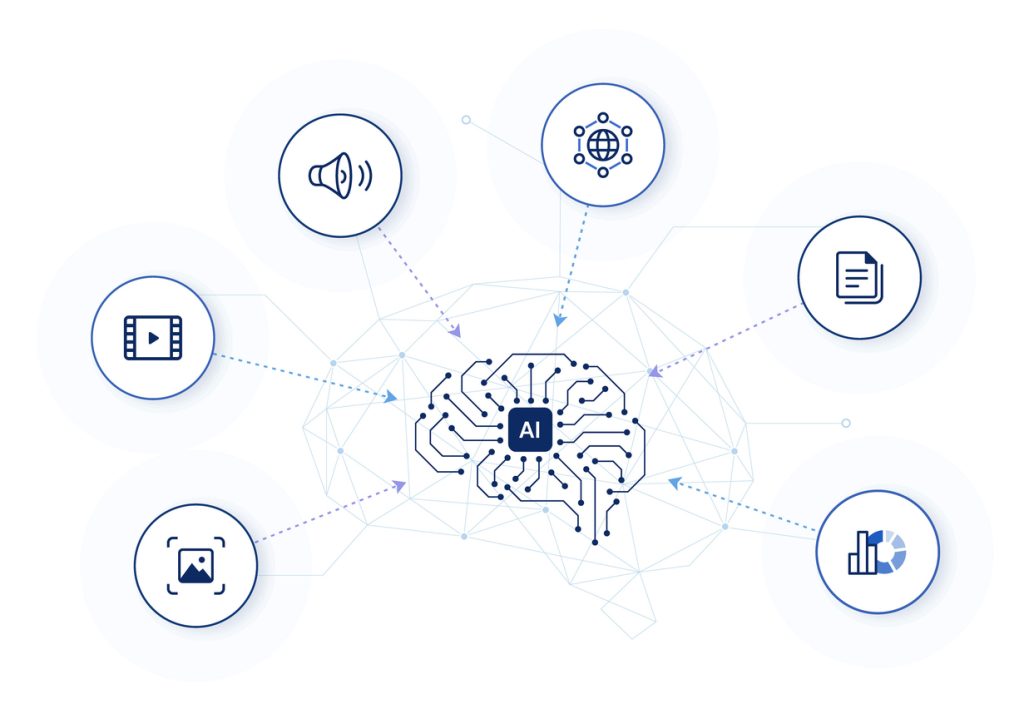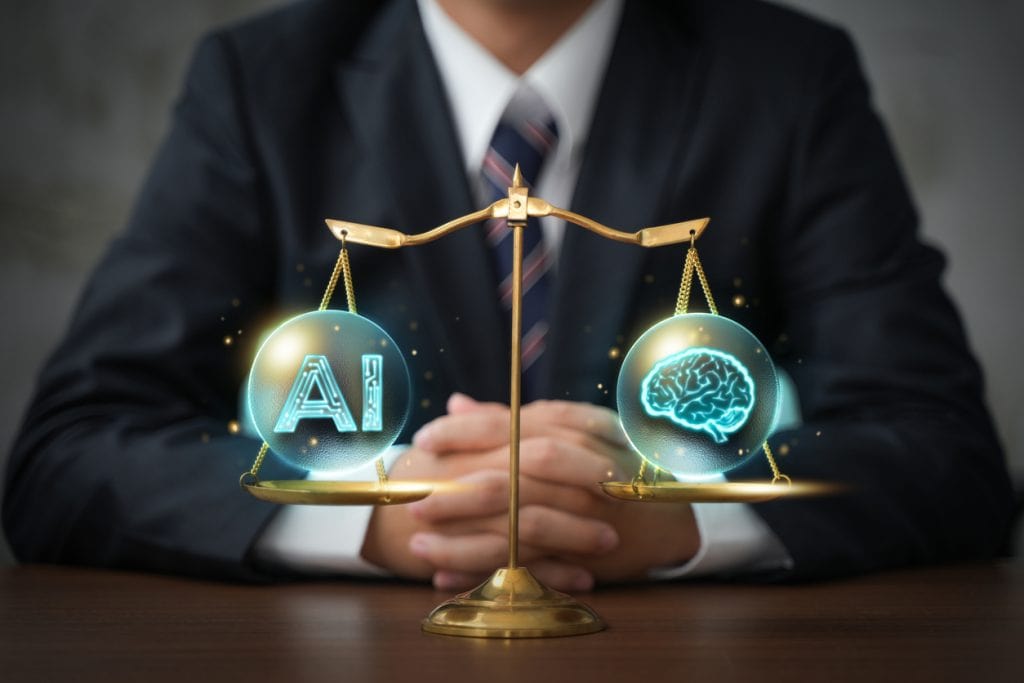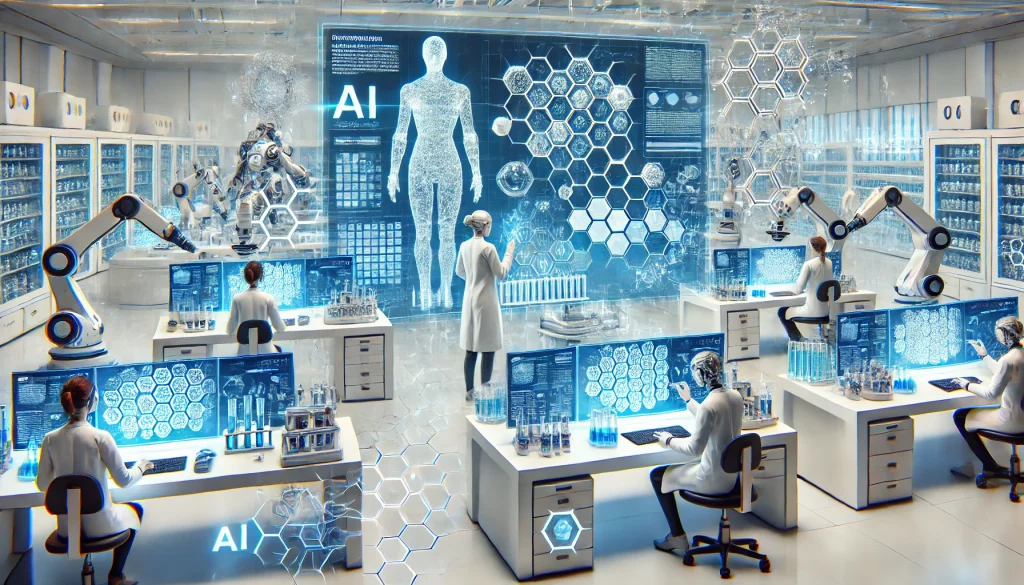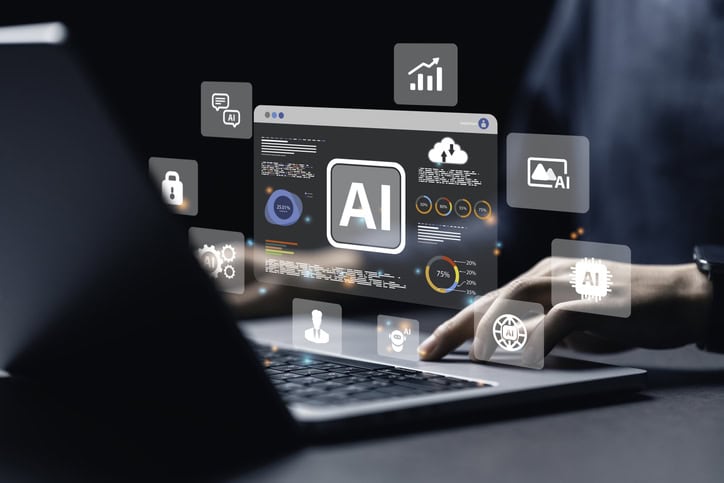Top AI Trends in Software Development 2024

Imagine boosting your coding productivity by 50% using cutting-edge AI tools—welcome to software development in 2024. Artificial intelligence (AI) is no longer a futuristic concept; it’s a transformative force reshaping how developers work, innovate, and solve problems. From automating mundane coding tasks to creating intelligent systems that learn and adapt, AI is the catalyst propelling software development into a new era. In this article, we’ll explore the latest AI trends in software development revolutionizing the industry and show you how to leverage these advancements to stay ahead of the curve.
AI-Powered Software Engineering

Artificial intelligence is becoming an indispensable ally in software engineering, enhancing everything from code generation to project management.
AI Code Generation Tools
AI-powered code generation tools are streamlining the development process by automating tasks and optimizing code efficiency.
Enhanced Productivity: Tools like ChatGPT o1, Claude 3.5 Sonnet, and Google Gemini 1.5 assist developers by suggesting code snippets, completing lines of code, and even solving complex programming challenges. These advanced large language models (LLMs) are designed to automate repetitive coding tasks, significantly reducing development time and allowing developers to focus on higher-level design and problem-solving.
Improved Accuracy: These AI models can detect syntax errors and offer real-time corrections, minimizing bugs and enhancing code quality. For instance, ChatGPT o1 has proven particularly useful for advanced mathematical and coding problems, especially in back-end development tasks. Its “chain of thought” reasoning approach enables it to outperform other models in tasks requiring deep reasoning.
Complex Problem Solving: Advanced models like Claude 3.5 Sonnet excel in generating readable, accurate code, especially for tasks like code maintenance, logic processing, and integration. With a high HumanEval score of over 90%, Claude 3.5 Sonnet has established itself as one of the best tools for natural language processing (NLP) and code generation.
Low-Code and No-Code Platforms
The rise of low-code and no-code platforms is democratizing software development by making it accessible to non-developers.
Accessibility: Platforms like Bubble and Xano allow users to create applications through intuitive drag-and-drop interfaces without extensive programming knowledge. AI automates much of the backend coding, significantly reducing barriers to software creation and enabling a broader audience to engage in development.
Rapid Prototyping: Developers can quickly build and test applications, accelerating the development lifecycle and time-to-market. AI-powered model-driven development (MDD) helps generate code structures based on blueprints, providing more efficient ways to prototype and test applications.
Cost Efficiency: By reducing the need for extensive coding expertise, businesses can lower development costs and allocate resources more effectively. This trend is particularly beneficial for startups and small businesses looking to innovate without significant investment in development teams.
AI-Driven Testing and Debugging

Automation in testing and debugging is enhancing software reliability and reducing time spent on quality assurance.
AI-Enhanced Unit Testing and Debugging
AI tools are revolutionizing how developers approach testing and debugging.
Automated Test Generation: Tools like GitHub Copilot and Snyk AI automatically generate unit tests, ensuring comprehensive coverage and identifying potential issues early in the development process. These tools can assist you in generating test cases for new code, reducing the likelihood of bugs and ensuring the code behaves as expected across various environments. You can learn more about AI-powered testing and debugging here.
Real-Time Bug Detection: AI-driven platforms can detect and fix bugs as code is written, reducing the time spent going back to debug errors and improving overall code quality. AI models analyze code in real-time, providing suggestions and fixes for potential vulnerabilities.
Vulnerability Assessment: Security tools powered by AI can help identify and remediate security vulnerabilities, protecting applications from potential threats. By offering AI-driven code analysis, developers can proactively address security concerns.
Predictive Analytics for Performance Management
Predictive analytics is enabling cutting-edge performance optimization.
System Performance Forecasting: AI models analyze historical data to predict system bottlenecks and failures, allowing developers to address issues before they impact users. Predictive AI ensures smoother software deployment and reduces the likelihood of downtime.
Resource Optimization: By predicting usage patterns, AI assists in optimizing resource allocation, ensuring applications run efficiently under varying loads. This proactive approach enhances application scalability and reliability.
Enhanced User Experience: Proactive management leads to fewer disruptions, resulting in a smoother user experience and increased customer satisfaction. Predictive analytics helps maintain high performance levels, which is critical in today’s competitive software landscape.
The Rise of Multimodal and Custom AI Models

Multimodal AI models are expanding the capabilities of software applications by integrating various data types.
Multimodal AI Models
These models process and interpret multiple forms of data, such as text, images, audio, and video.
Enhanced Interactivity: Applications can now understand and respond to voice commands, recognize images, and process natural language, leading to more intuitive user interfaces. Google Gemini 1.5 leads the pack with its capability to handle multimodal inputs, allowing developers to build more complex systems that integrate diverse data streams.
Cross-Functional Applications: In fields like healthcare and education, multimodal AI enables applications that can diagnose medical conditions from images or provide personalized learning experiences. These models support more complex, real-world applications by allowing developers to combine different input types seamlessly.
Innovation in Content Creation: Developers can create applications that generate multimedia content, such as converting text to realistic speech or creating images from descriptions. This opens doors for creative applications and enriched user experiences.
Smaller, More Efficient AI Models
Efficiency improvements are making advanced AI accessible on a broader range of devices.
Edge Computing: Models optimized for performance on local devices enable AI applications without the need for constant internet connectivity. The trend towards smaller, efficient models is critical for developers working with limited resources.
Mobile and IoT Integration: Lightweight AI models allow for sophisticated features in mobile apps and IoT devices, expanding the scope of smart technologies. These models can be deployed on local devices, making them suitable for mobile app development or Internet of Things (IoT) applications.
Cost Reduction: Efficient models reduce the computational resources required, lowering operational costs and energy consumption. This shift enables developers to incorporate sophisticated AI features into lightweight applications, reducing the costs associated with cloud-based models.
Explainable and Ethical AI

As AI becomes more integrated into software, the importance of transparency and ethics is paramount.
Explainability
Understanding how AI models make decisions is critical for trust and compliance.
Transparent Algorithms: Techniques like Explainable AI (XAI) help developers and users understand the reasoning behind AI decisions, essential in sensitive applications like finance and healthcare. LLMs, including Claude 3.5 Sonnet and ChatGPT o1, now include features that make their reasoning processes more transparent.
Regulatory Compliance: Explainability aids in meeting legal requirements, such as the EU’s GDPR, which mandates transparency in automated decision-making. The chain of thought reasoning in ChatGPT o1 allows users to review how the model arrived at its answers, which is especially useful for debugging and critical decision-making.
Ethical AI and Compliance
Ethical considerations ensure AI is developed and used responsibly.
Bias Mitigation: Developers must address and reduce biases in AI models to prevent discrimination and ensure fair outcomes. Anthropic’s Claude models are at the forefront of integrating ethical AI, trained on a constitution that includes ethical guidelines based on international standards.
Privacy Protection: Ethical AI involves safeguarding user data and respecting privacy, crucial in maintaining trust and complying with regulations. As AI models become more embedded in critical business and legal functions, ethical AI has gained prominence.
Responsible Deployment: Organizations are adopting frameworks for ethical AI usage, emphasizing accountability and the societal impact of AI technologies. This ensures that AI integrates responsibly into software development.
Edge AI and On-Device Processing

Edge AI is bringing powerful AI capabilities directly to devices.
On-Device AI
Running AI models on local hardware offers several benefits.
Reduced Latency: Processing data on-device eliminates the delays associated with cloud computing, enabling real-time responses crucial for applications like autonomous vehicles and interactive gaming. Real-time AI capabilities are possible without relying on cloud connectivity.
Enhanced Privacy: Keeping data on the device minimizes exposure to security risks associated with data transmission and storage in the cloud. This is particularly important for applications handling sensitive information.
Offline Functionality: Applications remain operational without internet access, improving reliability in various environments. This enhances user experience in areas with limited connectivity.
Developer Considerations
Building edge AI applications requires specific strategies.
Model Optimization: Developers need to compress and optimize AI models to run efficiently on devices with limited processing power. Techniques like quantization and pruning are essential.
Hardware Integration: Understanding the capabilities and limitations of device hardware ensures optimal performance. Developers must adapt and optimize models for specific hardware constraints of edge devices.
Energy Efficiency: Designing models that consume less power is essential for battery-operated devices. Efficient models extend device battery life and reduce energy costs.
AI Agents and Automation

AI agents are transforming automation by performing complex tasks autonomously.
Evolution of AI Agents
From simple chatbots to sophisticated assistants.
Intelligent Task Execution: AI agents can schedule meetings, manage emails, and handle customer service inquiries, increasing efficiency. They are evolving beyond simple chatbots to sophisticated agents capable of performing complex tasks.
Natural Language Processing: Advanced NLP enables AI agents to understand and respond to user intent accurately. This improves user interaction and satisfaction.
Integration Capabilities: By connecting with APIs and other software, AI agents can perform actions across multiple platforms and services. Integrating AI agents with existing systems and APIs can enable them to interact with the real world, leading to even more powerful automation possibilities.
Integration with Systems and APIs
Enhancing functionality through connectivity.
Seamless Operations: AI agents integrated with business systems can automate workflows, reducing manual intervention. This leads to increased productivity and efficiency.
Customization: Developers can tailor AI agents to specific organizational needs, improving relevance and effectiveness. Custom AI experts or “Gems,” as seen in Google Gemini 1.5, offer flexibility to fine-tune AI models for specialized use cases.
Scalability: Integrated AI solutions can easily scale with the growth of the business, accommodating increasing workloads. This ensures that AI-driven automation keeps pace with organizational demands.
AI Democratization and Low-Code Platforms

Making AI accessible to all levels of developers is accelerating innovation.
Open-Source Models and Tools
Community-driven resources are empowering developers.
Accessibility: Open-source models and resources make AI tools more accessible to startups and individual developers. The continued democratization of AI empowers developers of all levels.
Customization: Developers can modify and fine-tune models to suit specific applications. Techniques like low-rank adaptation (LoRA) and quantization allow for fine-tuning models without significant computational resources.
Collaborative Development: Open-source communities foster knowledge sharing and rapid advancement in AI technologies. This accelerates innovation and the development of new applications.
Techniques like LoRA and Quantization
Optimizing models for efficiency.
Low-Rank Adaptation (LoRA): Reduces the number of parameters needed for training, making it feasible on smaller datasets and hardware. This makes AI tools more accessible and cost-effective.
Quantization: Compresses models to reduce size and improve inference speed without significant loss of accuracy. This is critical for deploying AI on devices with limited computational power.
Empowering Startups and Individuals: These techniques lower barriers to entry, allowing more innovators to participate in AI development. Smaller open-source models, combined with resources like LoRA and quantization, are making AI tools more accessible.
AI in Specialized Fields

AI is making significant strides in domains like science and healthcare.
AI in Science & Healthcare
Transforming research and patient care.
Drug Discovery: AI accelerates the identification of potential drug candidates by predicting molecular interactions and analyzing clinical trial data. This speeds up the research process and reduces costs.
Personalized Medicine: Analyzing genetic and lifestyle data to tailor treatments to individual patients. AI enables more effective and targeted therapies.
Climate Modeling: AI assists in predicting climate patterns and developing sustainability solutions. This contributes to efforts in combating climate change and promoting sustainability.
Significance for Developers
Specialized applications require domain expertise.
Interdisciplinary Collaboration: Working with scientists and healthcare professionals to develop relevant solutions. Developers must understand the specific needs and challenges of these fields.
Ethical Considerations: Ensuring compliance with regulations like HIPAA and focusing on patient privacy. Ethical AI practices are crucial in sensitive domains.
Data Management: Handling large, sensitive datasets responsibly and efficiently. Developers must ensure data security and integrity.
Latest Developments in Major LLMs
Advancements in large language models are opening new possibilities.
ChatGPT o1 Enhancements
Improved capabilities in AI language models.
Chain-of-Thought Reasoning: Enables the model to process complex queries by breaking them down into logical steps. This approach allows ChatGPT o1 to outperform other models in tasks requiring deep reasoning.
Specialized Models: Variants like o1-mini are optimized for coding tasks, assisting developers with code generation and debugging. These models are particularly useful for advanced mathematical and coding problems.
Multilingual Support: Enhanced language capabilities allow for global application development. ChatGPT o1 offers better multilingual support, making it valuable for developers working in diverse linguistic environments.
Google Gemini 1.5 Innovations
Pushing the boundaries of AI research.
Massive Context Windows: Gemini 1.5 Pro boasts a 1 million token context window, enabling deeper analysis and understanding of extensive data and documents. This is invaluable for handling and analyzing large datasets.
Custom AI Experts (Gems): Users can create tailored versions of Gemini for specific tasks. This offers flexibility to fine-tune Gemini for specialized use cases.
Integration Tools: Seamless integration with programming languages like Python to streamline development workflows. Built-in document analysis, data handling, and Python integration enhance productivity.
Claude 3.5 Sonnet Models
Balancing intelligence, speed, and cost.
Multiple Model Options: Offers models like Opus, Sonnet, and Haiku, providing flexibility based on task requirements and resource constraints. Developers can choose the most suitable model for their needs.
Improved Safety Features: Reducing the risk of generating harmful or biased content. Enhanced safety measures contribute to responsible AI use.
Enhanced Performance: Claude 3.5 Sonnet excels in coding, reasoning, and mathematical tasks, making it valuable for developers. With a high HumanEval score of over 90%, it is one of the best tools for NLP and code generation.
Future Outlook: Preparing for the AI-Driven Future in Software Development
Embracing AI is essential for staying competitive.
Continuous Learning: Developers must stay updated with the latest AI trends and technologies. Staying abreast of the evolving AI landscape is essential for remaining competitive.
Ethical Development: Responsible AI use is crucial for maintaining trust and ensuring positive societal impact. Ethical considerations should be embedded throughout the development process.
Collaborative Approach: Working alongside AI researchers, data scientists, and industry experts enhances innovation and application relevance. Effective AI solutions often require collaboration across disciplines.
Adaptability: Being open to new tools and methodologies will position developers to leverage AI effectively. Embracing new techniques and technologies ensures that developers can harness the full potential of AI.
Conclusion
Artificial intelligence is undeniably transforming software development in 2024. From automating code generation to enhancing testing and debugging, AI tools are empowering developers to work smarter and more efficiently. By embracing these trends and focusing on continuous learning and ethical practices, you can stay ahead in this rapidly evolving industry. Now is the time to explore these AI advancements and consider how you can integrate them into your workflow. Join the conversation—share your experiences with AI in software development in the comments section below and subscribe for updates on the latest trends.






